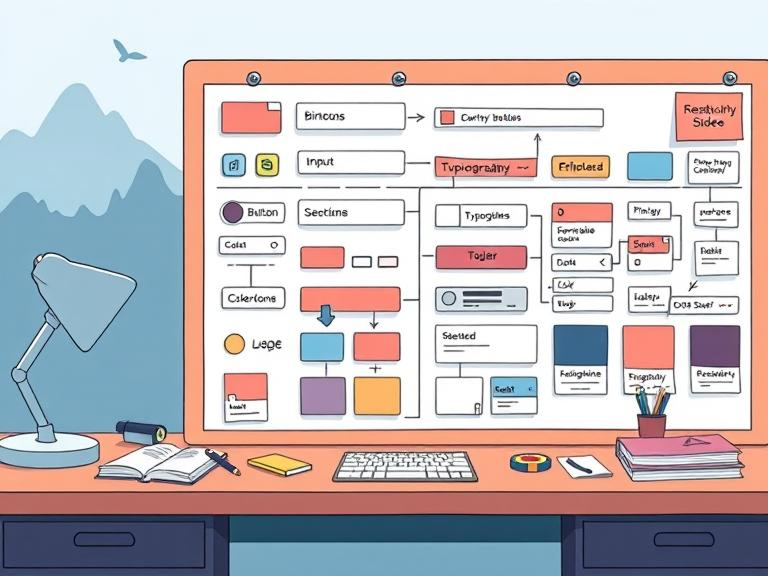What is a Design System?
A design system is a collection of reusable components, guidelines, and standards that define a consistent visual language and user experience for a product or suite of products. By using a design system, UX engineers can work more efficiently, create more consistent and cohesive designs, and ensure that their work aligns with the larger goals of the organization.
Benefits of a Design System
Consistency: One of the most significant benefits of a design system is that it promotes consistency across products and platforms. By using the same design language, UX engineers can create a seamless user experience, reducing confusion and cognitive load for users. Consistency also leads to improved brand recognition and can make it easier for users to navigate and understand new products.
Efficiency: A design system can also significantly improve the efficiency of UX engineering teams. By reusing components and patterns, engineers can spend less time creating new designs from scratch and more time focusing on high-impact tasks. This can lead to faster product development, reduced design debt, and improved collaboration between designers and developers.
Scalability: As your company grows, a design system can help ensure that your products can scale and evolve alongside your business needs. By establishing a shared language and set of standards, teams can work together to create more complex products and features that meet the needs of a changing user base.
Better User Research: A design system can also help improve the quality and impact of user research. By using consistent designs and patterns, UX researchers can more accurately test the effectiveness of different user flows and interactions, leading to more informed design decisions and better user outcomes.
Quick Guidelines to Get Started
If you're working as a UX engineer at a mid-size or enterprise-level company, it's likely that your organization could benefit from a design system. Here are some practical tips for getting started:
Identify Your Needs: The first step in creating a design system is to identify your organization's specific needs. Consider your product goals, target users, and existing design assets to determine what components, patterns, and guidelines should be included in your design system. You should also consider any brand guidelines or accessibility requirements that may impact your design decisions.
Establish a Process: Creating a design system is an ongoing process that requires collaboration and buy-in from stakeholders across your organization. Establish a clear process for creating and maintaining your design system, including roles and responsibilities, workflows, and communication channels. You should also consider how you'll gather feedback and incorporate new ideas and components over time.
Create a Living Style Guide: A style guide is a critical component of any design system. Create a living style guide that includes your organization's visual language, components, and patterns. Make sure the style guide is easy to navigate and understand, and that it includes clear guidelines for implementation.
Train Your Team: Your design system is only as effective as your team's ability to use it. Invest in training and onboarding for UX engineers, designers, and developers to ensure they understand the design system's components and how to use them effectively.
Maintain Your Design System: Finally, remember that a design system is an ongoing process. Regularly review and update your style guide and components to ensure they continue to meet the needs of your organization and users. You should also establish a process for incorporating
Conclusion
Having a design system in place is crucial for companies of any size. It allows for consistency across all products and services, and ultimately enhances the user experience. With the ability to streamline processes, reduce costs, and improve collaboration, a design system can provide significant benefits to both mid-size and enterprise level companies.
However, implementing a design system can be a daunting task, and requires significant planning and collaboration across teams. But with careful consideration and buy-in from all stakeholders, the end result will be worth the effort. A well-designed and maintained design system can set a company apart from its competitors, while providing a more cohesive and enjoyable experience for users.
So, whether you're a mid-size company or an enterprise level company, consider investing in a design system to take your UX design to the next level.

